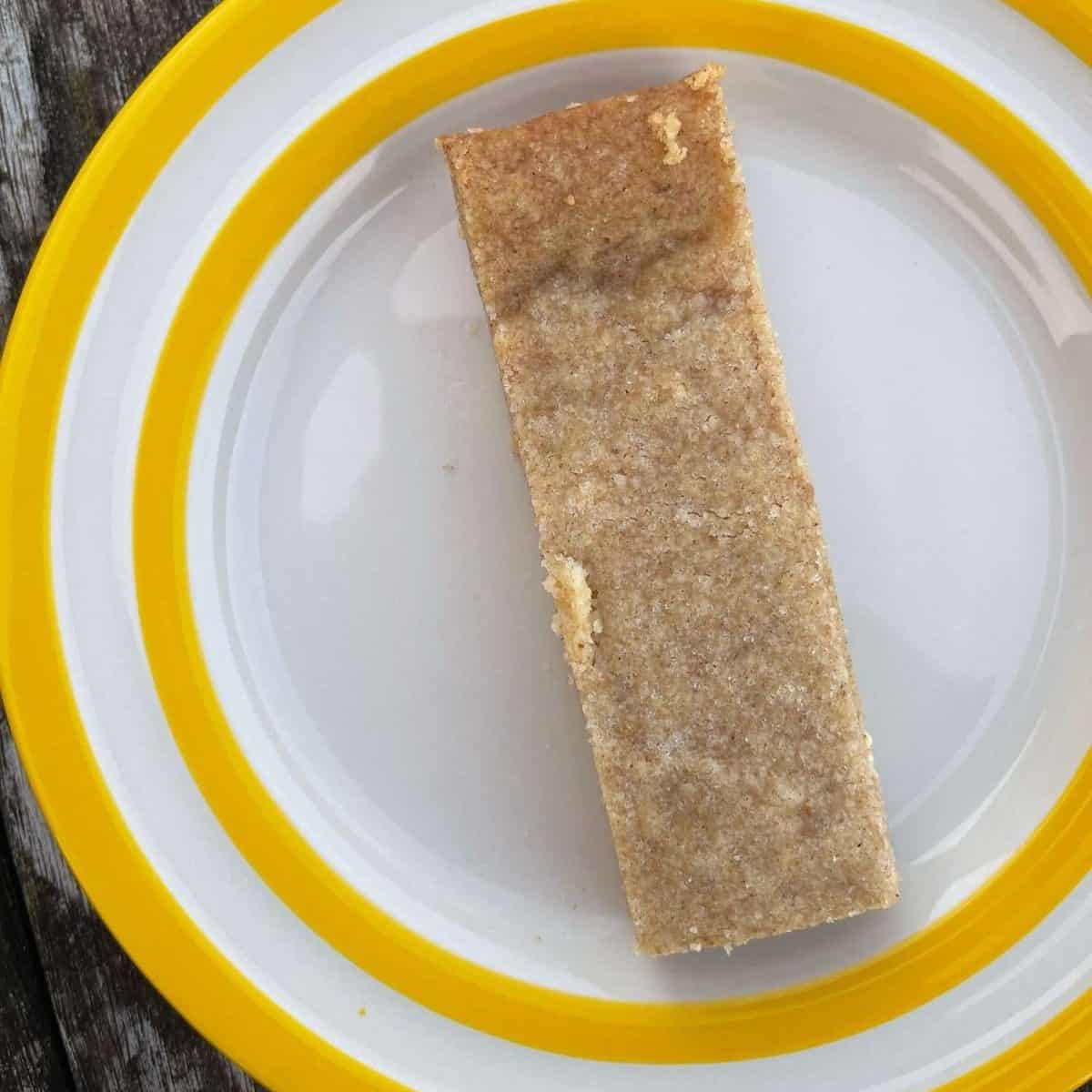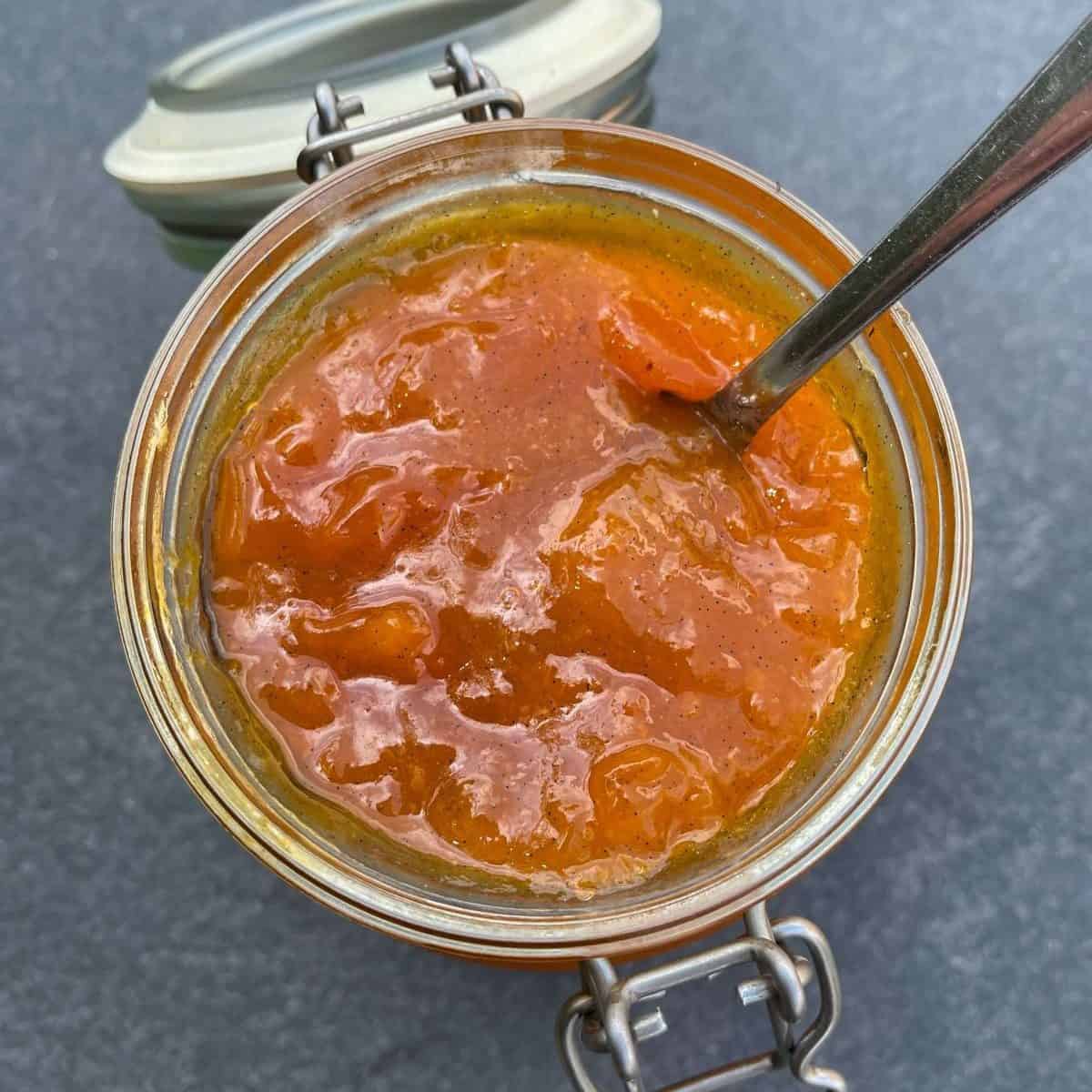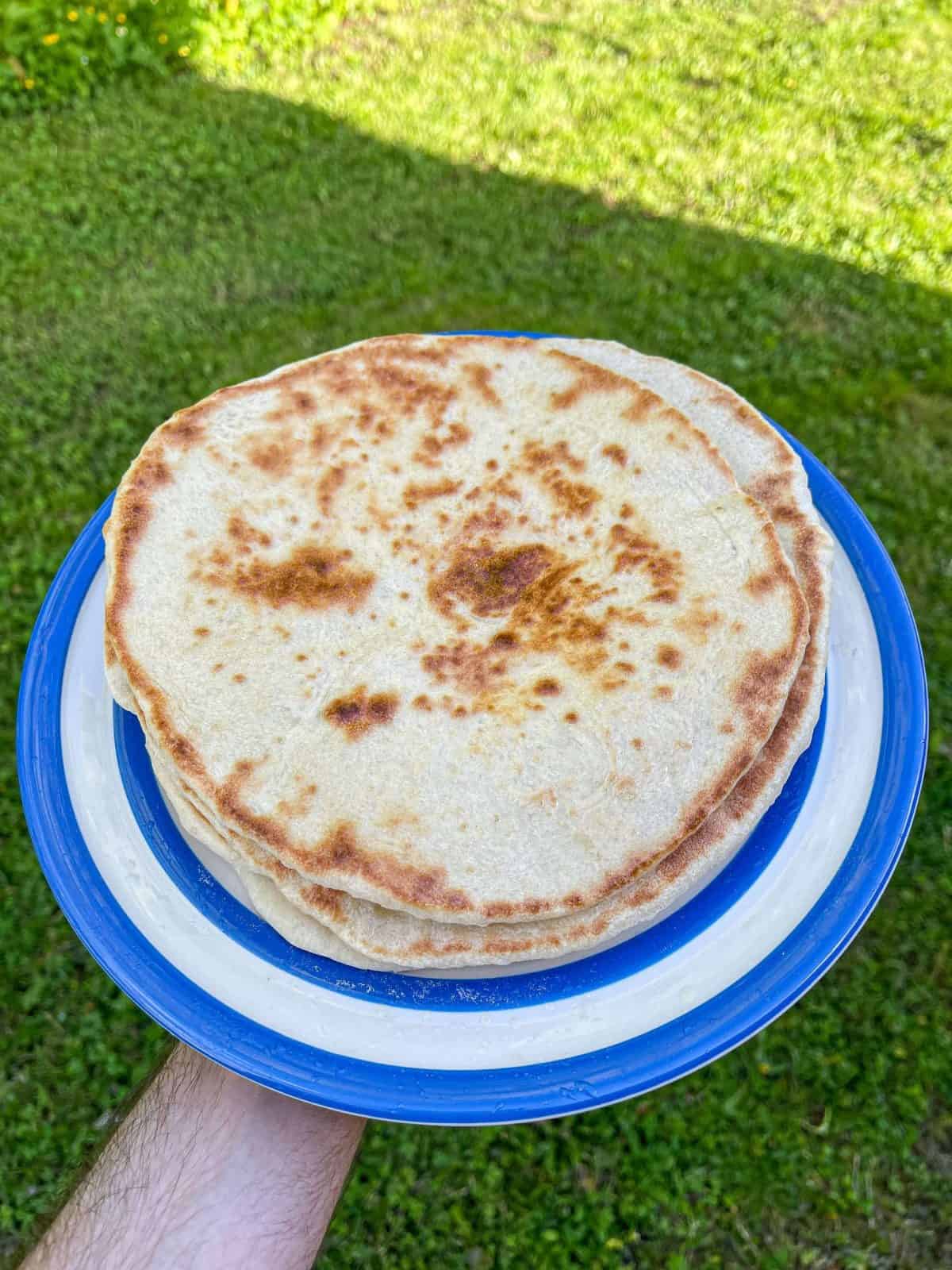Lemon & Almond Battenberg
A classic Battenberg cake, made completely from scratch, including the marzipan! Surprisingly easy to make & so much better than shop bought, this cake is light & fluffy with just the right amount of lemon.
This post contains affiliate links. I may earn a small commission if you make a purchase using these links, at no extra cost you. For more information, click here.

What Is A Battenberg Cake?
A classic British cake, a Battenberg consists of 4 rectangular pieces of sponge, stuck together with apricot jam & wrapped in marzipan. Traditionally 2 of the sponges are coloured pink whilst the other 2 are left yellow. When sliced, the iconic chequered pattern is revealed.
Ingredients Used
Butter
For a light & fluffy sponge with a tender crumb, we are using butter as apposed to margarine or oil. As with most baking, I’d recommend using unsalted butter so that we can control the salt content.
Ground Almonds
For extra flavour & moisture, we are using replacing some of the flour with ground almonds. This gives us a moist sponge cake with plenty of flavour.
Almond Extract
For an extra hit of almond flavour, we are using a small amount of almond extract.
Lemon
For another layer of flavour, we are adding two forms of lemon. Zest & curd. Rubbing the zest into the sugar releases the oils which adds extra flavour.
Red Food Colouring
To give two of our sponges a gentle pink colour, we add a tiny amount of red food colouring. We’re talking a drop or two! This can either be in the form of either a paste or liquid.
Marzipan
When it comes to the marzipan, we have two options. Use ready made or make our own. For this recipe, we are doing the latter but feel free to use ready made if you would prefer.
I you do want to make your own, it is surprisingly easy to make & only needs 6 ingredients!
The Battenberg Tin
A Battenberg tin is a rectangular tin with dividers that make up four equal sections. This is a fantastic way of making four equally sized sponges. These tins can be found online & will make this recipe a lot easier!
If you don’t have a Battenberg tin, you can use a rectangular baking tin & make dividers with foil & baking parchment.

How To Make A Lemon & Almond Battenberg
Lining The Tin
The first step in this recipe is lining the Battenberg tin. The easiest way I have found to do this is to first grease each divider & the tin with butter or oil. Next, line the bottom of the tin with baking parchment then the two long sides. Finally, use pieces of baking parchment folded in half to line each divider.

Making The Sponge
The first step when making the sponge is to rub the lemon zest into the sugar. This releases the oils from the zest, adding extra flavour. Next, beat the lemony sugar with softened butter until light & fluffy. This will take a good 5 minutes in a stand mixer.
We then beat in the eggs, one at a time then sieve in the flour & baking powder & add in ground almonds, salt, vanilla & almond extract. This is folded into the mixture then lemon curd is stirred through.
Add Food Colouring
Once the cake batter has been made, we need to divide it in half equally. The best way to do this is by weighing the batter into two bowls. If you record the weight of the stand mixer’s bowl when empty then subtract this from the weight of the bowl with the cake batter in, it will make this step easier!
Next, we take one bowl of cake batter & transfer into two sections of the Battenberg tin. This is our yellow sections of cake.
With the other bowl of batter, we add in enough red food colouring to turn it a dark shade of pink. This will only take a drop or two of food colouring. This is then transferred into the remaining two sections of the tin. Level off each section of batter with a palette knife & the cake is ready to bake.

Baking The Cake
The cake is then baked at 180°c/355°f for 20-25 minutes or until well risen & a skewer inserted into the cake comes out clean. The sponges will have risen slightly above the top of the tin. This is normal.
Trimming The Sponges
Once baked, we leave the sponges in the tin to cool for 30 minutes. We then take a sharp, serrated knife & trim the top of the cake so that it is level with the top of the tin. We can then carefully remove each section of cake from the tin, discard the baking parchment & leave the sponges on a wire rack to cool completely.
Making The Marzipan From Scratch
Whilst the sponges are cooling down, it’s time to make the marzipan. If your using ready made marzipan, you can skip this step.
To make the marzipan, add ground almonds, sugar, lemon juice, vanilla, almond extract & egg white into a food processor. Blitz to form a rough dough then transfer to a clean worksurface & knead to combine. Wrap the marzipan in clingfilm & refrigerate until needed.
Because we aren’t cooking the egg whites, it’s a good idea to use pasteurised ones from a carton.
Assembling The Battenberg
The final step is the assembly. First, we need to warm some apricot jam up slightly in a microwave. We then use this to glue the four sponges together. The bottom layer should have a pink sponge on one side & a yellow one on the other. The top layer should be the other way round.
We then roll the marzipan out into a rectangle measuring roughly 30cm x 25cm. It needs to be slightly longer than the cake & wide enough to completely cover.
Brush the centre of the marzipan rectangle with jam then stick then place the sponge on top. Brush the top & sides of the sponges then gently wrap the marzipan tightly around. Pinch the marzipan together to form a seam then flip over & drag along a worksurface (dusted with icing sugar) to seal.
Trim each end off with a serrated knife to expose the chequered pattern then serve.

Frequently Asked Questions
Kept in an airtight container, the Battenberg will last for 2-3 days. I would recommend keeping the cake whole & slicing when needed.
Absolutely! You will need around 500 grams.
You can but to keep things traditional, I like to make my sponges pink & yellow.
I would definitely recommend using pasteurised egg whites. These come in a carton & can be found in most supermarkets.
It will make things easier but isn’t completely necessary. If you don’t have one, use a 20cm x 15cm baking tin & use folded up foil to make the dividers.
Equipment Used
Please note that these are affiliate links & I may make a small commission if you make a purchase using these links, at no extra cost to you. For more information, click here.
More Baking Recipes
- Small Batch Lemon Drizzle Cake
- Chocolate Brownies
- Lemon & White Chocolate Shortbread
- Miso Banana Bread Chocolate Chip Cookies
- Small Batch Sticky Toffee Pudding
Lemon & Almond Battenberg
Equipment
- Battenberg Tin
- Stand Mixer
- 2 Mixing Bowls
- Large Baking Tray
- Sieve
- Serrated Knife
Ingredients
The Sponge
- 180 g Unsalted Butter Softened
- 180 g Caster Sugar
- Zest Of 2 Lemons
- 3 Eggs
- 1 tsp Vanilla Essence
- 1/2 tsp Almond Extract
- 150 g Self Raising Flour
- 50 g Ground Almonds
- 1/4 tsp Baking Powder
- 1/4 tsp Table Salt
- 25 g Lemon Curd
- Red Food Colouring Liquid Or Paste
Marzipan
- 175 g Ground Almonds
- 175 g Icing Sugar Sifted
- 2 tsp Lemon Juice
- 1 tsp Almond Extract
- 1/2 tsp Vanilla Paste
- 25 g Pasteurised Egg White
To Assemble
- 2 tbsp Apricot Jam
Instructions
The Sponge
- Preheat an oven to 180°c/160°c fan (355°f/320°f).Grease the Battenberg tin then line each section with baking parchment.
- Place the sugar into the bowl of a stand mixer then rub in the lemon zest. Add in the softened butter then use the paddle attachment to beat the butter until light & fluffy, around 4-5 minutes.
- With the mixer running on a medium speed, beat in the eggs one at a time.
- Sift together the flour & baking powder then fold into the batter along with the ground almonds, salt, vanilla & almond extract.Once mixed, fold in the lemon curd.
- Weigh the batter then divide equally into 2 bowls.
- Take one half of the batter & divide between 2 sections of the tin.
- Take a spoonful of batter from the other bowl & place into a separate bowl, stir in a couple of drops of food colouring (the batter should be a dark pink colour) then fold back into the batter. Divide the pink batter into the remaining 2 sections of tin.
- Use a palette knife to level off each section of batter (wash your palette knife before using on the other colour batter).
- Place the tin onto a baking tray & bake in the preheated oven for 20-25 minutes or until risen & a skewer inserted into the cake comes out clean.
- Leave to cool in the tin for 30 minutes then use a sharp, serrated knife to trim the top of the cake so that it is level with the top of the tin.
- Carefully remove each section of cake from the tin then peel off the baking parchment & transfer to a wire cooling rack to cool completely.
Marzipan
- Place the ground almonds, sugar, lemon juice, vanilla, almond extract & egg white into a food processor. Blitz together until a rough dough forms then transfer to a clean worksurface and knead together.
- Wrap the marzipan in clingfilm & refrigerate until the cake is completely cool.
Assembly
- Warm the apricot jam slightly in a microwave then pass through a sieve.
- Take a yellow section of cake & lightly brush jam alongside the right edge. Take a pink section of cake, brush with jam along the left edge then stick the two pieces of cake together.
- Repeat with the remaining 2 pieces of cake but the pink cake on the left, yellow on the right.
- Brush jam onto the top of one pair of cake then place the other pair on top.
- Next, dust a clean worksurface with icing sugar then roll the marzipan out so that it is just longer than the cake & wide enough to completely cover, roughly 30cm x 25cm.
- Brush along the centre of the marzipan with apricot jam (the same width as the sponge) then place the sponge on top.
- Brush the top & sides of the sponge with the remaining jam then gently wrap the marzipan tightly around the sponge. Pinch the marzipan together along the middle of the top edge to form a seam then flip the Battenberg upside & drag across a worksurface (dusted lightly with icing sugar) to seal.
- Trim each end slightly with a serrated knife to expose the checkerboard pattern then serve.







